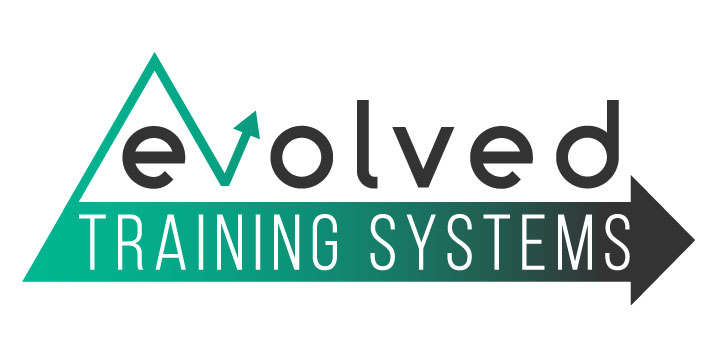OPEN WOD 18.3
800 Double-unders. In CrossFit Games Open WOD 18.3, you need to be able to do both types of muscle ups, you have to snatch a pretty light DB for a few reps, and do a few reps of a light Overhead Squat. But mostly, you just need to be really efficient at Double-unders.
2 Rounds For Time (14 min cap):
100 Double-unders
20 OHS (115/80)
100 Double-unders
12 Ring Muscle-ups
100 Double-unders
20 DB Snatch (50/35)
100 Double-unders
12 Bar Muscle-ups
Preliminary Thoughts:
Every movement is technical. This means that these are not simple movements like burpees or box jumps. Each movement will require significant focus, and this will be made increasingly difficult by the heart rate spike caused by the double-unders. If you don’t break the double-unders initially as part of strategy, you will end up breaking them later on. I am always a proponent of breaking reps before your body forces you too.
Every movement taxes the shoulders. Seriously. Double-unders and OHS tax the shoulders in the form of stability and as supporting muscles, while the other movements will use the shoulders dynamically throughout. This is a massive assault on the shoulder girdle. Inflammation will be high post workout, and your shoulders will be very fatigued for a few days afterwards (depending on how far you get in the spectrum of the 2 rounds).
This is not a short workout. This workout will be nearly impossible to finish in the 14-min time cap. Therefore, this must be approached the same way you would approach a two-mile run. You must not redline, and you must break things up as a means of striving for sustainability throughout the workout. If you get to the first set of Muscle-ups and you are already approaching the redline, you will struggle to compose yourself.
The idea will be to stay aerobic for as long as possible, throughout all movements, ensuring that you remember to breathe and to consistently work beneath the redline. Any breaks that are taken must be short and succinct, and should be taken as a result of strategy, as opposed to necessity.
If you do not currently have Muscle-ups in your repertoire, this is a great opportunity to get your first one. You should have plenty of time left on the clock by the time you get to the first set of muscle-ups. If you can do a few strict pull-ups and a few strict dips, you are just a transition away from nailing a muscle-up. Be excited – Be invigorated – Be confident, and don’t approach this workout as a victim – instead, use it as an opportunity to excel and exceed all expectations.
Warm-ups:
1. It will be vital to raise the heart rate prior to the workout. We will want to perform a combination of general warm-up, movement specific warm-up, and finally a couple interval pieces to elevate the heart rate.
2. The first step is to just start moving. This will generally be about 10-15 minutes of “light movement,” which may just consist of alternating some light rowing, light jogging, and some dynamic stretching until a light sweat begins to form.
3. Movement-specific prep will consist of many different movement patterns (upper body pull, upper body push, knee flexion, overhead stability). Start with general mobility work and light movement through the desired range of motion, using PVC pipe. This cycle can consist of OHS, OH Lunges, Band pull-aparts, Face pulls, Ring Rows, Push-ups, Kip swings on the rings, maybe a few strict pull-ups etc…
4. You will then want to do a few reps of each movement. Very low reps, just move through the full ROM. Also include a couple squat snatches with the working weight.Finally, you will want to perform a few reps of the workout itself, and this can double as an opportunity for you to incorporate the “interval” portion I spoke about previously. Make sure to also focus on the transitions between movements, and how you feel moving from one to the other. The following would be a good approach:
1 Round (rest 2-3 min) repeat 1 Round:
10 Double-unders
4 OHS
10 Double-unders
2 Muscle-ups
10 Double-unders
4 DB Snatches
10 Double-unders
2 Bar Muscle-ups
This should be more than sufficient, because you have to be cautious of not creating fatigue in the movements you will be performing in the workout. This is why reps and volume need to be low, but we still need to achieve the goal of elevating the heart rate and practicing transitions.
The Workout:
Ok, so as far as the workout is concerned, there is no “one-size-fits-all” approach to this one. Each athlete must assess how they will partition the reps, based on their individual proficiency at each movement. You must first determine which is your weakest movement, and then game the other movements to ensure that you don’t burn out or fail reps on your weakest movement. For most, this will be the muscle-ups. For some it will be the Double-unders. If you are not extremely efficient at Muscle-ups, you will need to be very careful how aggressively you attack the double-unders, or else you will burn out your shoulders for the muscle-ups.
Regardless of who you are, the double-unders will spike your heart rate. You must manage fatigue throughout the entire workout. So here are some basic guidelines:
If you struggle with Muscle-ups – Break the double-unders to ensure that you stay as fresh as possible before the muscle-ups.
If you struggle with Double-unders – Break them into small sets from the start, and formulate a plan of attack that will allow you to stay somewhat composed, and ensure you don’t redline before getting to the muscle-ups.
If you don’t think you will struggle with any of the movements – Just make sure to stay composed, keep breathing, break sets of all movements BEFORE IT BECOMES NECESSARY, and continue to move as consistently as possible.
Final Thoughts and Considerations:
Breathing during movements – you must maintain composure through DU sets. Think about trying to remain stoic, and not showing pain on your face. Stay relaxed and remember to breathe. On OHS, you should always breathe when standing tall and the body is expanded to allow for the most air intake.
Nutrition – This is another workout where you do not want to be bogged down from eating a meal too close to game time. You will need sustainable energy, so a small dose of liquid nutrition (protein/carbs) about 60-90 min before the workout will do best. Just like last week, stay low on fats prior to the workout as these will bog you down and make you feel heavy. You will also want to have some additional carbs the night before the workout. Something like 20-30g of quality carbs will be best and not too excessive.
How many time can I do this workout? – If you don’t have Muscle-ups, you can do it as many times as you want! If you make it into the second round, you could probably do it twice. The biggest concerns are shoulder fatigue and calf soreness (depending how many Double-unders you get through).




